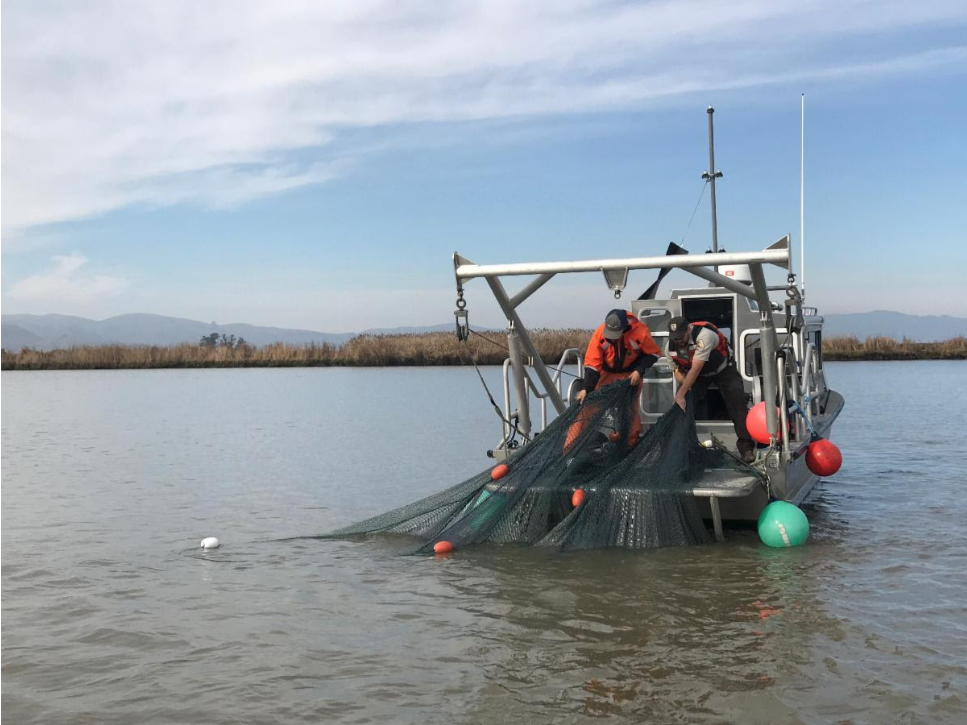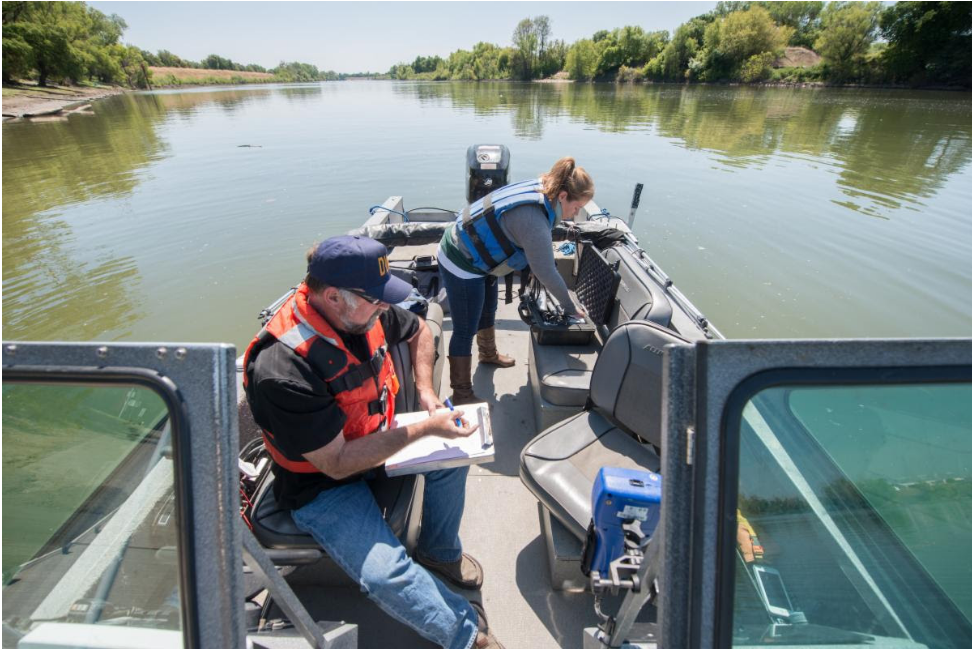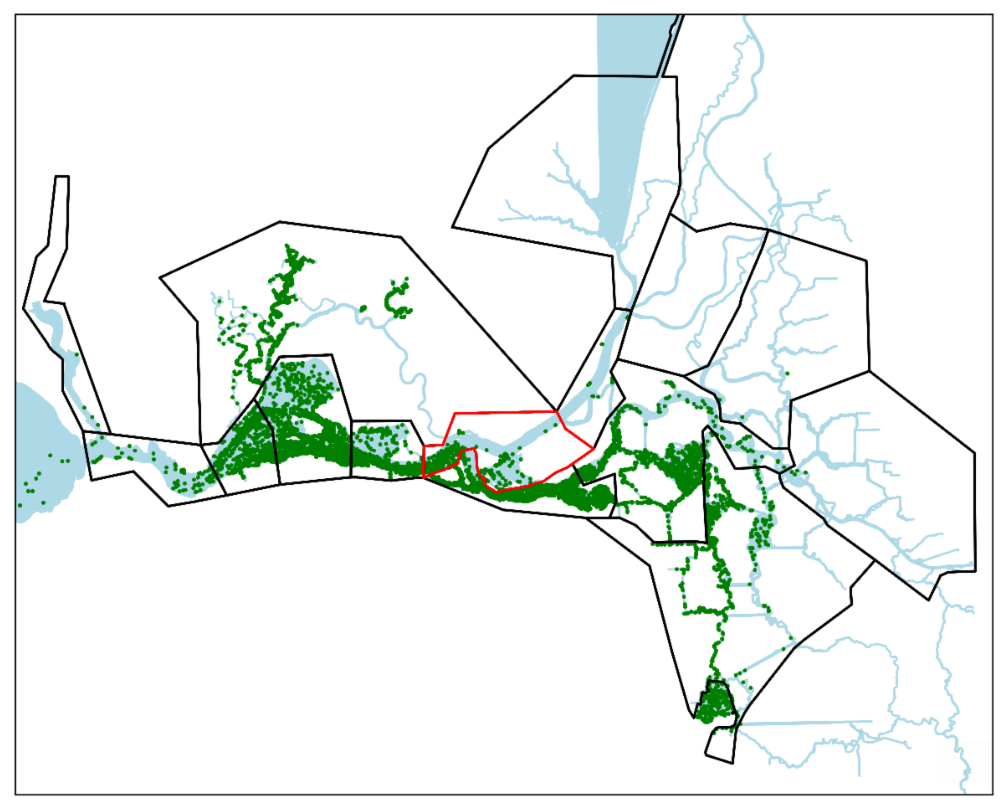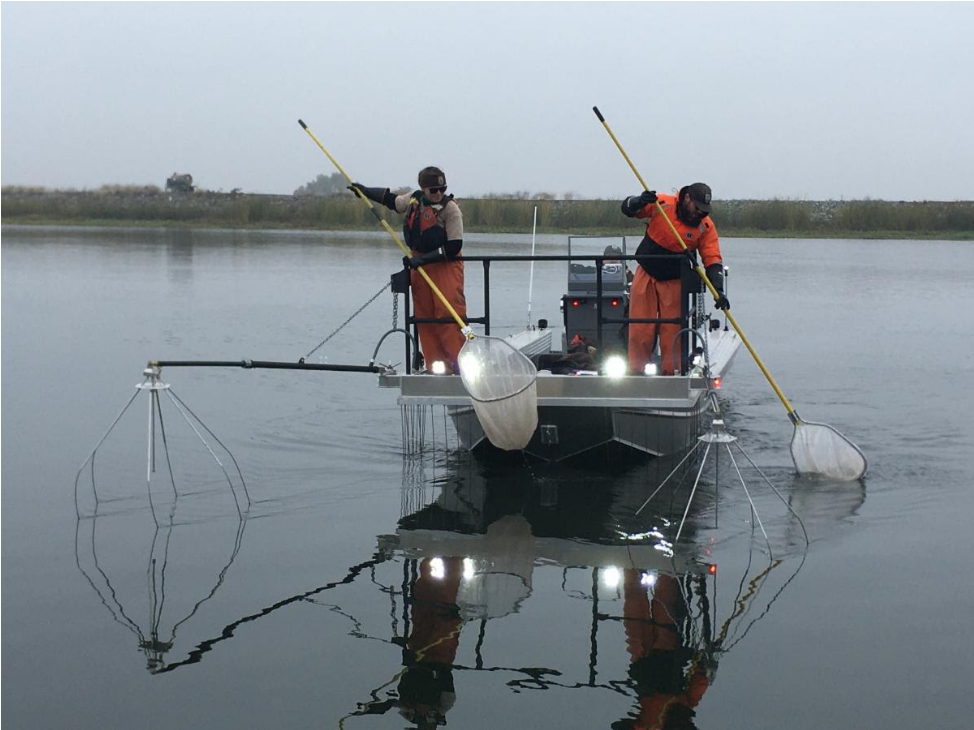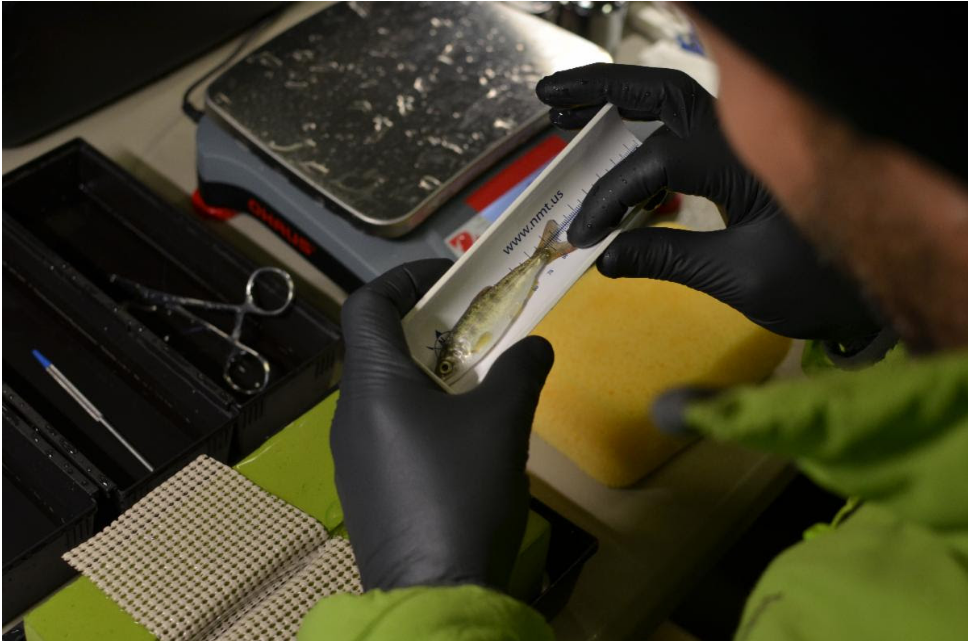This month, Pearls digs into some nuances of Delta smelt monitoring—and how we can get more bang from our sampling buck—in three related articles from San Francisco Estuary and Watershed Science. Plus, new research on salmon survival and flow volume.
The robust monitoring programs established to track now-rare Delta smelt could benefit other native fishes, too.
Author:Nate Seltenrich | Above: EDSM crew retrieving a net during trawling in Montezuma. Photo by Kate Erly.
Water turbidity in the Sacramento-San Joaquin Delta can be used as a reliable indicator of smelt entrainment rates in the fish screens of the export pumps at the southern edge of the Estuary.
Author: Alistair Bland |Above: During the 2015 drought DWR scientists tracked the distribution of turbid water in the Delta to protect endangered fish and water supply. Photo: Florence Low, DWR
New insights into Delta smelt swimming behavior could help locate the increasingly elusive fish and prevent losses at the pumps.
Author: Michael Hunter Adamson | Above:Simulated smelt distribution (green dots) representing responses to salinity and turbidity. The area outlined in red is the region of simulated release (black outlined areas are different study regions). Image: Gross, et al.
Electrofishing is a powerful but underutilized tool for monitoring Delta fish, particularly species favoring “structured” habitats that are difficult to sample using more common methods like trawls and seines.
Author: Nate Seltenrich | Photo: Electrofishing in the Delta, courtesy Ryan McKenzie
New research indicates that survival of juvenile Chinook salmon in the Sacramento River system can be significantly boosted by achieving key thresholds for river flow.
Author: Alistair Bland | Above: Preparing to tag a juvenile salmon. Photo: Cyril Michel
In case you missed it: Talks, plenaries, special sessions, and on-demand videos from the virtual 11th Biennial Bay-Delta Science Conference (BDSC) are now online. The recordings will be available on the BDSC website through the summer.


